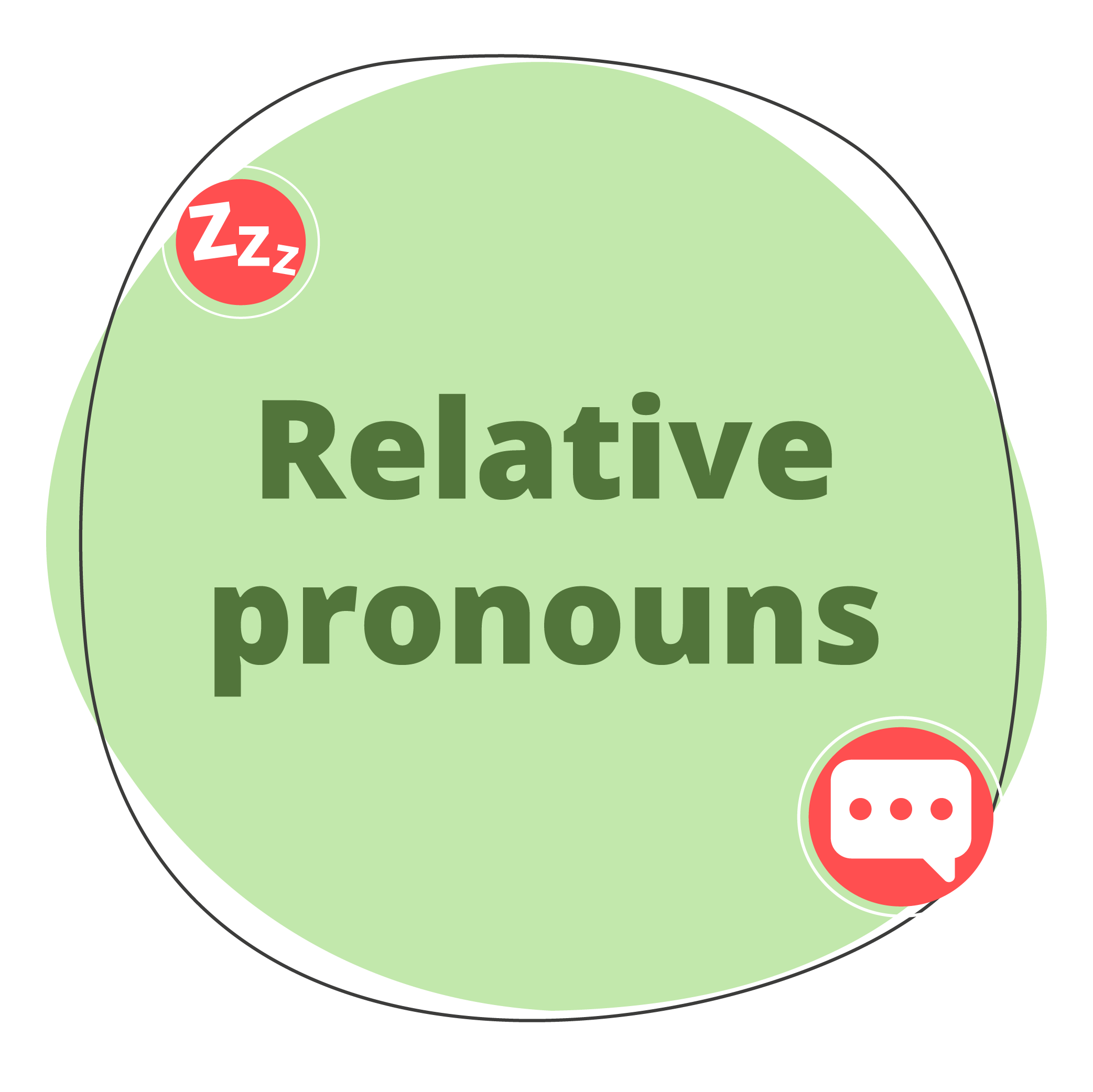

Determiners are words placed before a noun to clarify what the noun refers to. It can give information such as quantity, ownership, and specificity.
Watch the following video to learn more about them.
Determiners can be classified as one of the following:
Take a look at the examples for each type of determiner. Check the use to give sense and qualify the nouns.
Determiners are essential because they work on clarifying nouns and making a sentence as precise and focused as possible. To review what you’ve just learned, articles, demonstratives, quantifiers, and possessives can act as determiners.
The following exercise can help you to identify each type of determiner.
Instructions: Match each determiner with the type that it belongs to.
A relative pronoun is a word that connects an independent clause to a dependent clause. Relative pronouns mean to provide more information about the subject to which they relate.

The three most common relative pronouns are who, which, and that. Who has two other forms: the object whom and the possessive whose.
Relative pronouns aim to provide more information about the subject (noun or pronoun) it relates to. These relative pronouns function exactly like adjectives, which can also be called adjective clauses.
Here are some examples of how sentences can include relative pronouns:
Sheela, who is a teacher, also works as a social worker.
The car that was stolen last month was found in a river.
Susan is the girl whom I was talking about.
The park where we first met is being renovated.
The girl, who saved the little boy, was appreciated by everyone.
Let’s now have some reading comprehension so you practice and read more examples of the use of relative pronouns.
Instructions: Read the text and identify the relative pronouns. Then, answer some questions about it.
A Very Long Life
Timothy, the tortoise, was about 160 years old when he died at his home near Exeter in November 2005. Timothy, whose early life was at sea, was thought to be the oldest resident in Britain at the time.
He was found by a British naval officer, Captain John Courtenay Everard, on a Portuguese ship in 1854. Everard, who was a relative of the Earl of Devon, adopted him and he became the mascot on a succession of British ships for nearly forty years. In 1892 he went to live at Powderham Castle, which is the historic home of the Earls of Devon, and in 1935 he was given a permanent home in the castle’s rose garden.
Throughout his long life, Timothy showed a keen survival instinct. During World War II, for example, he felt the vibrations from the bombs that the Germans were dropping on Exeter and made his air-raid shelter under some steps. He was also very healthy, never needing to see a vet until the last year of his life.
At the time of his death, Timothy was owned by Lady Gabrielle Courtenay, who is the aunt of the current Earl of Devon. Lady Devon also lives at Powderham, where Timothy was given a family funeral and was buried on the grounds of the castle.
Instructions: After reading “A Very Long Life,” answer some questions about it.
When you want to combine two separate pieces of information about somebody, something or somewhere in one sentence, use relative pronouns.
Use who for people (and sometimes animals, especially pets), which for things, where for places , and when for time. You can use that instead of who, which or when (but never who) as long as there is no comma before the relative pronoun.
Instructions: Write the correct relative pronoun who, which, that, where or whose to complete the sentences.
Relative adverbs connect nouns or pronouns to relative clauses, which can be restrictive or nonrestrictive. These provide an alternative to more formal structures, which generally include a preposition + which.
The English language features three relative adverbs: where, when, and why. They have an adverbial function because they modify adjectives or verbs. Adjectives can, in turn, modify nouns or noun phrases.
For example, consider the sentence: The store where I buy my groceries is closing. The phrase where I buy my groceries is a relative adjective clause because it modifies the noun phrase the store. The word where is itself a relative adverb.
The relative adverbs where, when, and why provide additional information about a place, time, or reason.
You will test your speaking skills using relative pronouns and adverbs. Pay attention to the correct form of each.
Instructions: Repeat the sentences to practice the correct pronunciation.
What is the difference between relative adverbs and relative pronouns?
A relative adverb introduces a relative clause. The English relative adverbs are: where, when, whenever, and wherever.
A relative pronoun introduces a relative clause, such as: who, whom, which, and whose. That is also sometimes used to introduce a relative clause.
Instructions: Listen to the conversations using relative adverbs, pronouns, and determiners.
In the conversation, identify the relative adverbs, pronouns, and determiners.
Check your answers:
In this lesson, you learned that relative pronoun tells more about a person or object noun in a sentence. In addition, relative adverbs talk more about the time and location of a noun.
Remember that determiners include articles, adjectives of quantity, demonstrative adjectives, possessive adjectives, among others. What you have learned will make you improve all your English skills.
It is time to test yourself. After studying the contents of this lesson, use what you learned to complete this assessment.
Instructions: Complete each sentence by using who, which, why, that, whose or where.